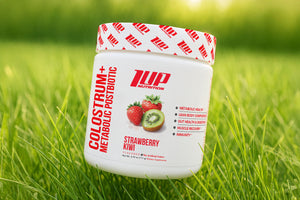The shins are a funny thing -- you never really think about them until they start to hurt -- either as a result of you bashing your shin on something (like a desk) or experiencing the dull ache that’s all too commonly experienced in the form of shin splints.
While we can’t do much to help you stop bashing your shins on furniture, we can do our part to help you find some relief from those pesky shin splints.
Here, we present several different stretches to help combat shin splints.
But first, let’s discuss why we get shin splints in the first place.
What Causes Shin Splints?
Shin splints (medial tibial stress syndrome) are incredibly common, especially with those who enjoy running. They manifest as pain radiating along the tibia (shin bone), which is the long bone the runs down the front of your lower leg.
Shin splints are caused by either repetitive stress on the muscles and connective tissue that attach to the shin bone or stress imposed on the bone itself.
Shin splints can also occur as a result from stress reactions to bone fractures. The incessant pounding imposed upon the lower leg from walking, running, lifting, etc can lead to the development of very small cracks in the shin bone, which can be repaired with adequate rest. However, if you do not give your body enough time to recover, the cracks persist and shin splints will ensure.
What Are the Symptoms of Shin Splints?
If you’ve ever experienced a shin splint before, you’re all too familiar with how they feel. But, if you’re one of the fortunate soles who has never had to deal with constant aching in the lower leg, here’s what you can expect:
- Dull ache in the front part of the lower leg
- pain on the sides of the shin bone
- muscle pain
- tenderness along the inner part of the lower leg
- Mild swelling in the lower leg
- Weakness and/or numbness in the feet
You may also experience muscle pain during exercise.
Who is at Risk for Shin Splints?
Shin splints can happen to anyone, but the type and intensity of exercise you engage in may increase the chances of developing shin splints.
Individuals most likely to encounter shin splints are runners and ballet dancers due to the high volume of training they subject their lower bodies to. Also, muscular imbalances (such as tight calves or weak glutes), flat feet or pronated arches can also lead to shin splints.
Additionally, those who train on uneven surfaces (e.g. downhill running) or those who train with inappropriate or worn-out shoes are also at risk.
Lastly, if you are coming from a previously sedentary state and drastically increase your training volume and frequency, you can expect to deal with shin splints.
Now that you know the ins and outs of shin splints, let’s see what you can do to find some relief!
Stretches to Combat Shin Splints
Calf Stretches
Shin splints originate in the lower leg, so it stands to reason that stretching your calves may help reduce the pain experienced with shin splints.
Remember, our calves take a beating each and every day as they must bear the weight of our bodies as we walk.
As such, be proactive by stretching your calves daily.
To perform a calf stretch:
Sit on the floor with your legs straight in front of you.
Wrap an exercise band or towel around the bottom of your feet and gently pull your toes back towards you (i.e. dorsiflexion).
Hold this position for 10-15 seconds and then relax.
Repeat 2-3 times on each leg.
Anterior Tibialis Strengthening Exercise
Strengthening the muscle that surrounds your shin bone can help reduce the occurrence of shin splints.
To perform this exercise, all you need is a lightweight exercise band and a place to secure it.
Sit on the floor and attach the band around something sturdy, the loop the band around the top of your right foot.
Curl your toes back towards you (dorsiflex) and hold for a count of two, and slowly return your foot back to the start position over a count of 4.
Perform 10-15 reps with your right side, then perform the same amount on your left side.
Repeat for a total of 2-3 sets daily.
Heel Step-Downs
For this exercise, it’s time to get up off the floor and on your feet.
Assume an upright position with your feet spread shoulder-width apart.
Take a step forward with your left foot.
As your heel contacts the ground, hold your toes off of the ground, do not let your foot go into plantarflexion (toes pointing). You should be using your shin muscles (anterior tibialis) to prevent the sole of your foot from touching the ground.
Step back to the starting position, and repeat with the same side.
Perform 10-15 reps with the left foot, and then perform 10-15 reps with the right foot.
Repeat for a total of 2-3 sets.
Shin Stretch
After stretching the calves and strengthening the shin muscles, it’s time to stretch out the shins.
For this stretch, we’re back on the ground, sitting on our shins with the tops of our feet flat on the floor.
Bring your knees and ankles together.
Now, place your hands on the floor behind you and gently lean back.
Note, as you lean back, your knees may lift off the floor, depending on your flexibility. To create a maximum stretch, try to keep your knees as close to the ground as possible.
Hold this stretch for 20-30 seconds.
Rest 60 seconds and two more times.
Takeaway
Shin splints happen to everyone and they can occur for a variety of reasons (overtraining, under stretching, improper footwear, anatomical abnormalities, etc.).
If you’re a runner, make sure you’re running on even surfaces, have good shoes, and using proper technique. You might also consider taking up some cross-training to alleviate some of the burden on your lower legs.
If you’re not a runner, but prone to frequent shin splints, make sure to stretch your calves daily and incorporate the tips and exercises outlined here to help provide some relief.






